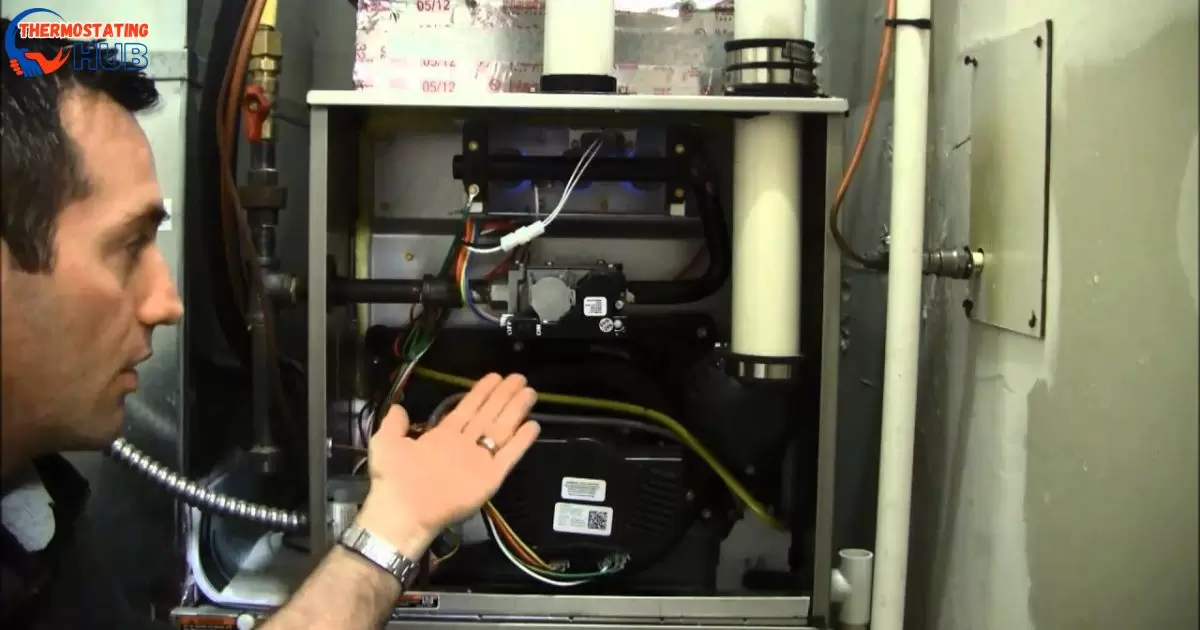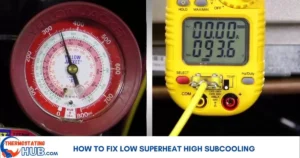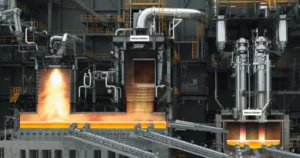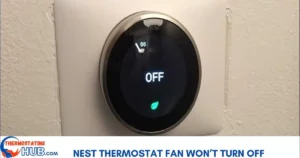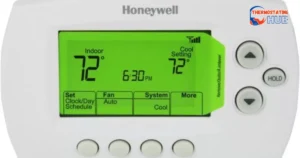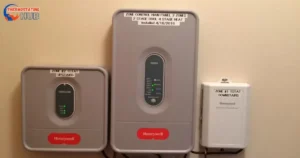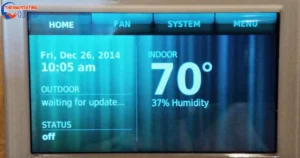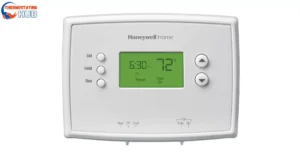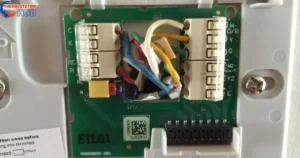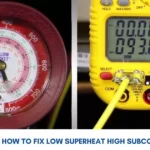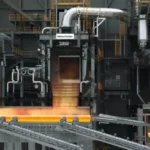Experiencing code 32 on your Carrier furnace? No worries, this guide has got you covered. When your Carrier furnace flashes code 32, it’s signaling that the low-heat pressure switch is open. Let’s delve into potential reasons behind this and the steps you can easily follow to troubleshoot and reset this status code.
Now, let’s explore some likely culprits. First, check for any blockages or restrictions in the air intake and exhaust vent pipes. Ensure they are clear for smooth airflow. Next, inspect the furnace filter; a dirty filter can trigger code 32. Replace or clean it if needed.
Remember, maintaining a clear and unobstructed airflow is crucial for your furnace’s optimal performance. By addressing these potential issues, you can reset code 32 and keep your Carrier furnace running smoothly.
Possible Causes for Carrier Furnace Code 32
| Causes | Possible Fixes |
| The inducer motor does not create a vacuum | Confirm the inducer motor is operational.- Examine the pressure switch hose for blockages, pinching, or improper connection. |
| Blocked flue or weak induced draft blower | Remove obstructions from the flue.- Assess the induced draft blower’s performance. |
| Blocked vent or intake, water backed up in hoses | Check and clear any blockages in the vent or intake.- Ensure hoses connected to the drain are free of water backup. |
| Pressure switch malfunctioning | Test the pressure switch by creating a vacuum through the hose while the inducer motor is running. |
Troubleshooting steps for carrier status Code 32
Check and Ensure the Inducer Motor is Running
Firstly, confirm that the inducer motor is in motion when the furnace kicks into gear. This motor plays a pivotal role in setting the stage for airflow crucial to the combustion process.
Now, let’s focus on the pressure switch. If it connects directly to the exchanger, the vacuum hose step can be skipped.
The pressure switch and inducer motor work hand in hand. The pressure switch depends on the vacuum generated by the motor to assess the furnace’s safety for operation.
Inspect the rubber hose linking the pressure switch to the inducer motor. Ensure there are no obstructions, pinches, or cracks that could hinder the establishment of a vacuum.
Also, double-check the hose’s connections to the pressure switch and the inducer motor. An improper connection may disrupt the vacuum, triggering the code 32 error. 🔍
Check and Clear Any Blockages in the Vent or Intake:
Start by examining both the exhaust vent (flue) and the combustion air intake. These openings serve as entry and exit points for air within the furnace system. Check for any noticeable blockages, such as debris or other obstructions.
These hindrances can disrupt the essential airflow needed for combustion and proper venting. Take action by clearing any obstructions you come across to guarantee unimpeded airflow.
This proactive step not only prevents the furnace from overheating but also enhances its overall efficiency. Keeping these passages clear is key to ensuring your furnace operates at its best.
Ensure No Water Is Backed Up in Hoses Connected to the Drain
For furnaces equipped with a drainage system and connected hoses, ensure these hoses remain clear and devoid of any water backup.
Carefully inspect the hoses for any indications of water accumulation, as this could signal a potential drainage problem.
A blocked or clogged drainage system has the potential to lead to water backup, impacting the furnace’s performance and triggering the status code 32.
If no obstructions and no water backup are detected, try this troubleshooting step: disconnect the rubber hose from the inducer, leaving it attached to the switch. Activate the thermostat to call for heat, then manually create a vacuum by sucking on the hose. Listen for the switch click and observe if the burners ignite. This simple test can provide insights into the system’s functionality. 🚿
Further Troubleshooting Carrier Code 32 Beyond Basics
When the initial checks fail to resolve the issue, the troubleshooting process takes a more technical turn, necessitating specialized equipment. This gear is instrumental in evaluating whether the vacuum levels around the pressure switch fall within the proper range.
Specialized Vacuum Testing
This entails employing tools such as a vacuum manometer or a Magnehelic gauge. These instruments play a pivotal role in measuring the level of vacuum generated by the inducer motor and its influence on the pressure switch.
Connecting the Gauge:
The gauge is connected between the inducer motor and the pressure switch. This configuration is crucial for assessing whether the vacuum generated is substantial enough to prompt the pressure switch to transition between its “close” and “open” states. 🔄
Proper Vacuum Levels
The objective is to verify that the vacuum exerts a force at least equal to the specified amount for the “closing” state or exceeds 20% of the requirement for the “opening” state. Typically, these benchmarks are indicated on the switch’s label. 🎯
Limitation for Homeowners
For homeowners, access to specialized testing tools like a vacuum manometer or a Magnehelic gauge may be limited. Consequently, executing this advanced diagnostic procedure necessitates the expertise of an onsite HVAC technician.
Importance of Accurate Testing
Without precise measurements of the vacuum levels, troubleshooting becomes uncertain. Relying on guesswork can potentially result in unnecessary part replacements.
Changing Parts
If you’re troubleshooting without accurate vacuum measurements, resorting to a trial-and-error approach may lead to replacing parts without certainty.
A reasonable initial step could involve replacing the pressure switch, given its relatively affordable nature. If the issue persists despite this replacement, the next logical examination would be the inducer assembly. 🔧
Read Also: Thermostat Turned Off But Still Blowing Air
Decoding Carrier Furnace Code 32: Unveiling the Pros and Cons
When it comes to understanding Carrier Furnace Code 32, it’s essential to unravel the potential benefits and drawbacks associated with it. This error code often signals issues that require attention. On the positive side, Code 32 can serve as an early warning system, alerting homeowners to potential problems before they escalate. It acts as a diagnostic tool, aiding in the identification of issues within the furnace system.
| Pros | Cons |
| Early detection of potential furnace issues | Disruption in heating due to error code activation |
| Helps in diagnosing problems | Requires professional intervention for repairs |
| Prevents potential major system breakdowns | This may lead to increased maintenance costs |
While Code 32’s proactive nature can be advantageous, the interruption in heating and the need for professional assistance can pose challenges. Homeowners must stay vigilant and seek timely solutions to maintain the efficiency of their furnace systems. Regular maintenance and prompt action in response to error codes contribute to a smoothly running heating system. 🔍
Navigating the Future Innovations in Resolving Carrier Furnace Code 32
Looking ahead, advancements in resolving Carrier Furnace Code 32 are shaping the landscape of home heating systems. As we anticipate the future, innovative solutions are emerging to tackle the challenges posed by this specific error code.
One promising development is the integration of smart technologies in furnace diagnostics, providing homeowners with real-time insights and remote monitoring capabilities. These innovations aim to enhance the user experience by offering more proactive and user-friendly approaches to address Code 32 issues.
| Future Innovations | Potential Benefits |
| Smart diagnostic tools for real-time insights | Increased efficiency in issue identification |
| Remote monitoring capabilities | Timely alerts and proactive maintenance |
| User-friendly interfaces for easy navigation | Enhanced user experience and ease of troubleshooting |
These advancements not only promise to streamline issue identification but also empower homeowners with tools to take preventive measures. The integration of user-friendly interfaces ensures that navigating through error codes becomes more accessible for users, contributing to a more efficient and hassle-free heating system.
Embracing these innovations could pave the way for a future where dealing with Carrier Furnace Code 32 is not only effective but also user-centric. 🔧
Crucial Key Takeaways for Effectively Addressing Carrier Furnace Code 32 Issues
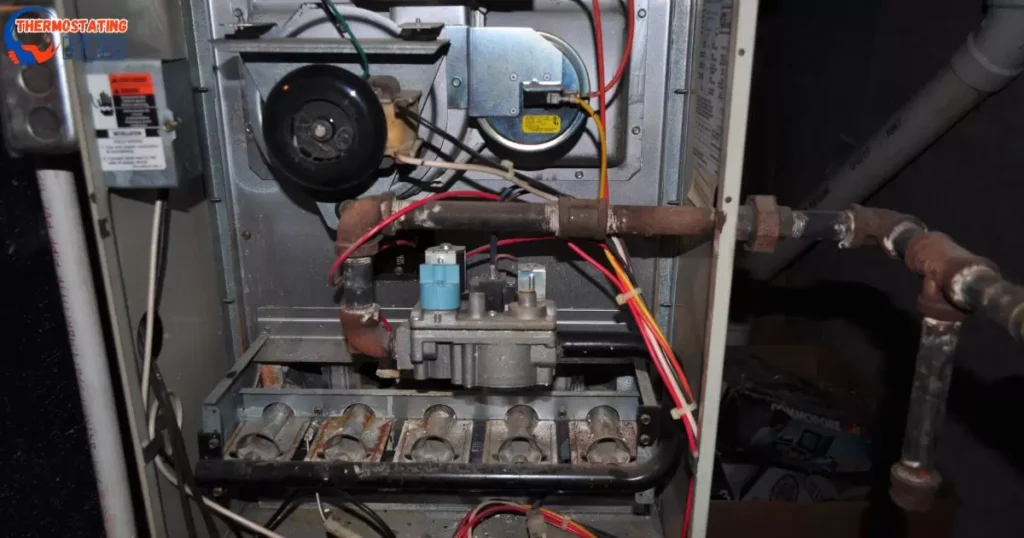
Understanding how to tackle Carrier Furnace Code 32 issues is vital for maintaining a well-functioning heating system. To address this specific error code effectively, homeowners should be aware of key takeaways that can guide them through the resolution process.
| Key Takeaways | Actionable Steps |
| Prompt response is crucial | Investigate the error code immediately |
| Regular maintenance is preventive | Schedule routine check-ups to prevent future issues |
| Professional help may be necessary | Contact a certified technician for complex problems |
| Stay informed about innovations | Embrace new technologies for enhanced diagnostics |
Responding promptly to Code 32, conducting regular maintenance, and seeking professional assistance when needed are fundamental steps.
Answers To Key Questions:
What is the code 32 on a Bryant furnace?
Code 32 on a Bryant furnace typically indicates a pressure switch or venting issue. This error may be due to problems with the venting system, pressure switch, or other related components. Professional HVAC assistance is recommended for a thorough diagnosis and resolution.
How do I reset my Carrier furnace code 33?
Resetting code 33 on a Carrier furnace involves addressing the underlying issue causing the error. Start by checking the air filter, ensuring proper ventilation, and inspecting the blower motor. After resolving these issues, turn off the furnace power, wait for a few minutes, and then turn it back on. If the problem persists, professional help may be needed.
What are the codes for a Carrier furnace?
Carrier furnace error codes can vary, but common ones include code 33 (limit switch fault), code 13 (flame rollout switch lockout), and others. The specific codes and their meanings can be found in the furnace’s user manual or on the unit’s control board. Consult the manual or seek professional assistance for accurate interpretation and resolution.
Why is my furnace flashing a 31 code error Carrier?
A 31 code error on a Carrier furnace typically indicates a pressure switch issue. This could be related to problems with the venting system, pressure switch, or inducer motor. Professional HVAC service is recommended to diagnose and address the specific cause of the error.
Final Thoughts
Tackling Carrier Furnace Code 32 involves proactive troubleshooting. Regular maintenance and clearing of vent blockages often resolve the issue. If problems persist, specialized equipment and professional assistance may be required for precise diagnostics.
While Code 32 may disrupt heating temporarily, it serves as an early warning system, preventing potential major breakdowns. Looking forward, smart technologies promise to revolutionize furnace error resolution, offering real-time insights and user-friendly solutions.
Embracing these innovations and staying vigilant with routine maintenance is key to a smoothly running heating system. 🏠

I’m Matthew Porter, the HVAC enthusiast at thermostatinghub.com. Beyond being a writer, I’m your dedicated problem solver for all things heating and cooling. Join me on my blog for a storytelling adventure through the HVAC universe. Together, let’s transform your comfort challenges into tales of coziness!
